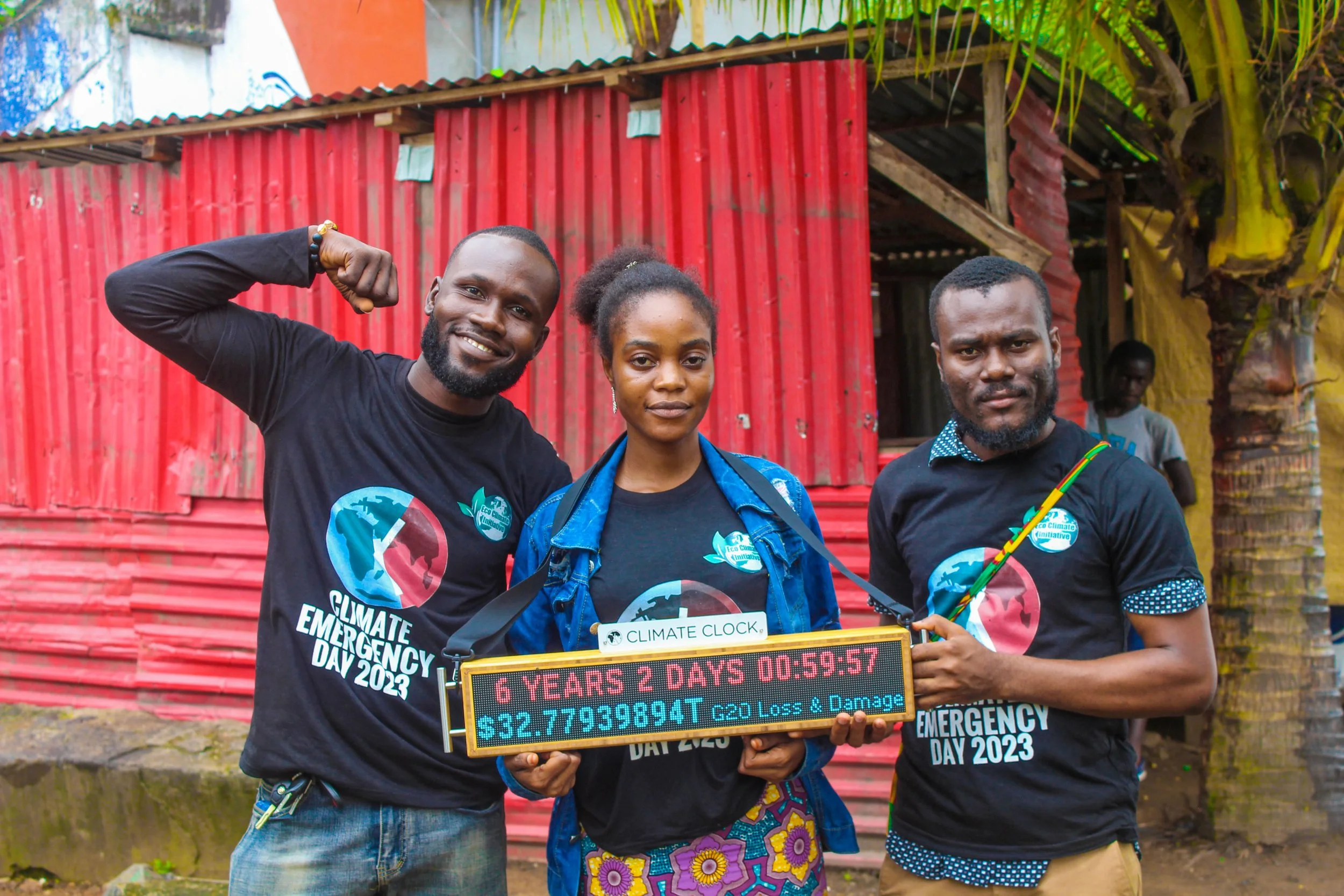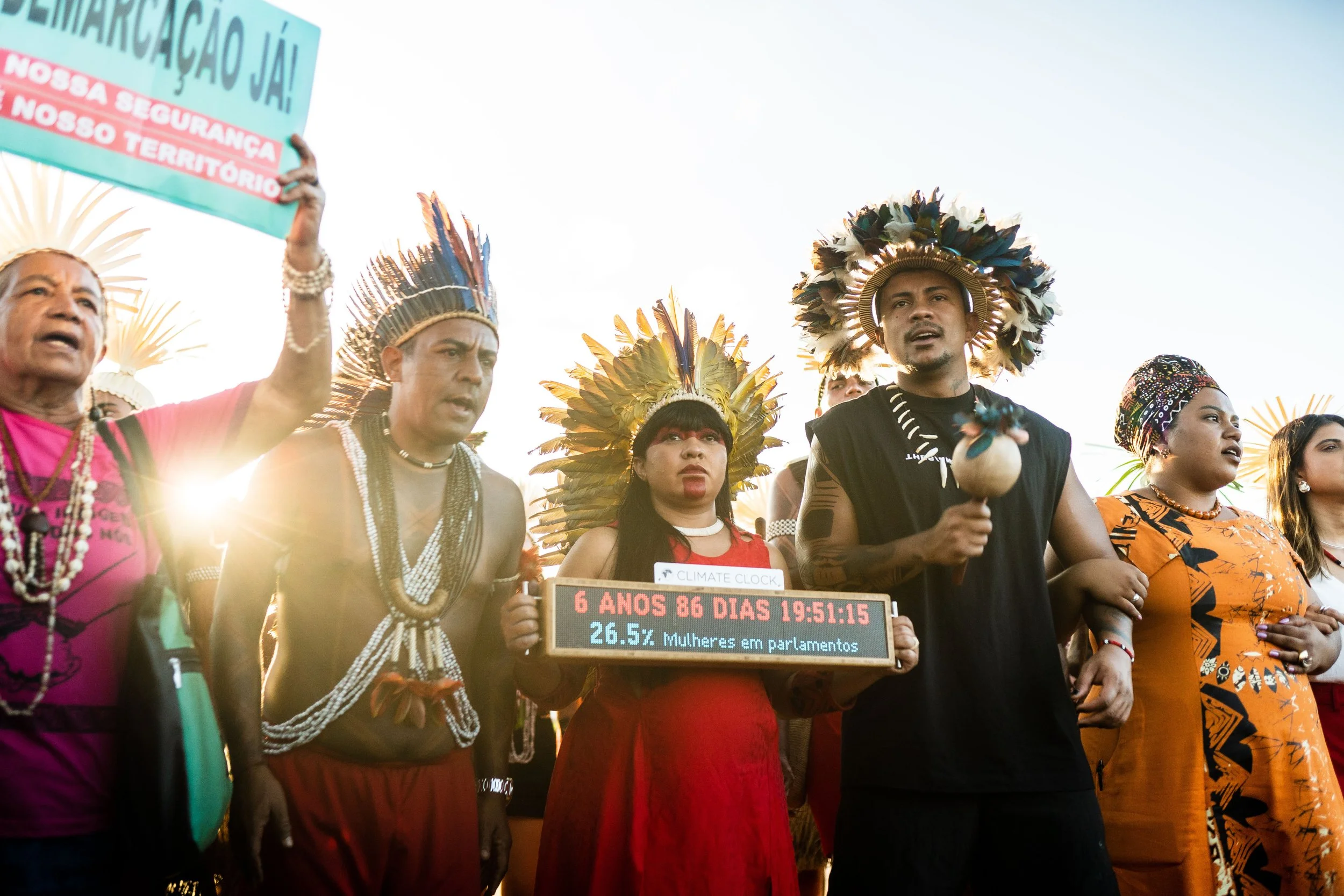Lifeline:
LOSS & DAMAGE FINANCING
The Climate Clock’s Loss and Damage Lifeline tracks the climate debt (in $US) that wealthy, high-emitting G20 countries owe for the devastating impacts their excessive carbon emissions have caused to others, especially those in "developing" countries. Paying for Loss & Damage is a key climate lifeline, a clear climate solution to help the world meet its necessary climate goals.
Why Loss and Damage Financing?
Devastating climate change impacts are not only going to occur in the future. They have already been occurring for decades and are now increasing in severity. Countries who have contributed the least amount to carbon emissions have experienced the greatest negative impacts, as the direct result of the higher emissions of wealthier countries, who have benefited greatly. As a result, a climate debt is owed to cover the real, material Loss & Damage costs caused by climate change. These funds are needed for impacted countries to remediate the damage, adapt to a changing climate, while also providing the finances to pursue pathways towards a more just, sustainable future.
The Goal: Secure Financial Commitments
This lifeline is a tool the climate justice movement can use to secure trillions of dollars in climate finance for the “developing” world over the next five years.
Data
Heat waves, forest fires, droughts and massive floods caused by climate change have become daily headlines, forcing 26 million people into poverty each year. People living in poverty are twice as likely to work in sectors highly susceptible to extreme weather events, live in fragile housing in vulnerable areas, and have less support to recover and rebuild. In 2021 alone, 10 extreme weather events caused a worldwide economic loss of around $170.3 billion. Not only are people losing their homes and livelihoods, but also their culture, dignity and future opportunities. The vast majority of this heartbreak and devastation occurs in “developing” countries.
These impacts have understood since 1979, when world leaders first recognized climate change as a serious problem at the World Climate Conference. Since then carbon emissions have continued to rise, with devastating impacts, especially on the developing world.
The economic burden on developing countries from the damage caused by climate change has become unsustainable. According to researchers at the Center for Global Development, by 2019 the G20 countries had accumulated $29.7 trillion in climate debt, most of it owed to the "developing" countries. Once the 2020 data on CO2 emissions is taken into account, This debt comes to $31.8 trillion ($12.3 trillion for G7). And unless world leaders commit to radically reduce carbon emissions and transition to clean energy, that debt is expected to rise to ~$42T by 2030 (~$15.6T for G7).
The amount of money (US$) the G20 (and G7) countries owe in climate debt to date, since 1979. Calculation is based on the Carbon Liability Model from the Center for Global Development’s report on Valuing Climate Liabilities: Calculating the Cost of Countries’ Historical Damage from Carbon Emissions to Inform Future Climate Finance Commitments by Lee Robinson, Ian Mitchell, and Atousa Tahmasebi. Updated data from 2020 on historical CO2 emissions were sourced from Our World in Data.
How to Use This Lifeline:
Use the Loss & Damage Lifeline to call for accountability from high-emitting countries. Amplify demands for real financing - not loans - to communities on the frontlines of climate destruction. Share this lifeline in your advocacy, actions and posts to spotlight the urgent need for climate reparations. Push governments and negotiators to prioritize Loss & Damage finance at global forums like COP.
VIEW LIFELINES
Renewable Energy
Tracking the percent of global energy coming from renewable sources – wind, water, solar, and bioenergy. It currently stands at 13.5% and is rising, but extremely slowly.
Indigenous Land Sovereignty
Displays the total area of land and inland waters currently managed by Indigenous Peoples and Local Communities (IPLCs) worldwide.
Gender Parity
Tracks the percentage of women represented in national parliaments around the world, emphasizing equal participation in decision-making.




